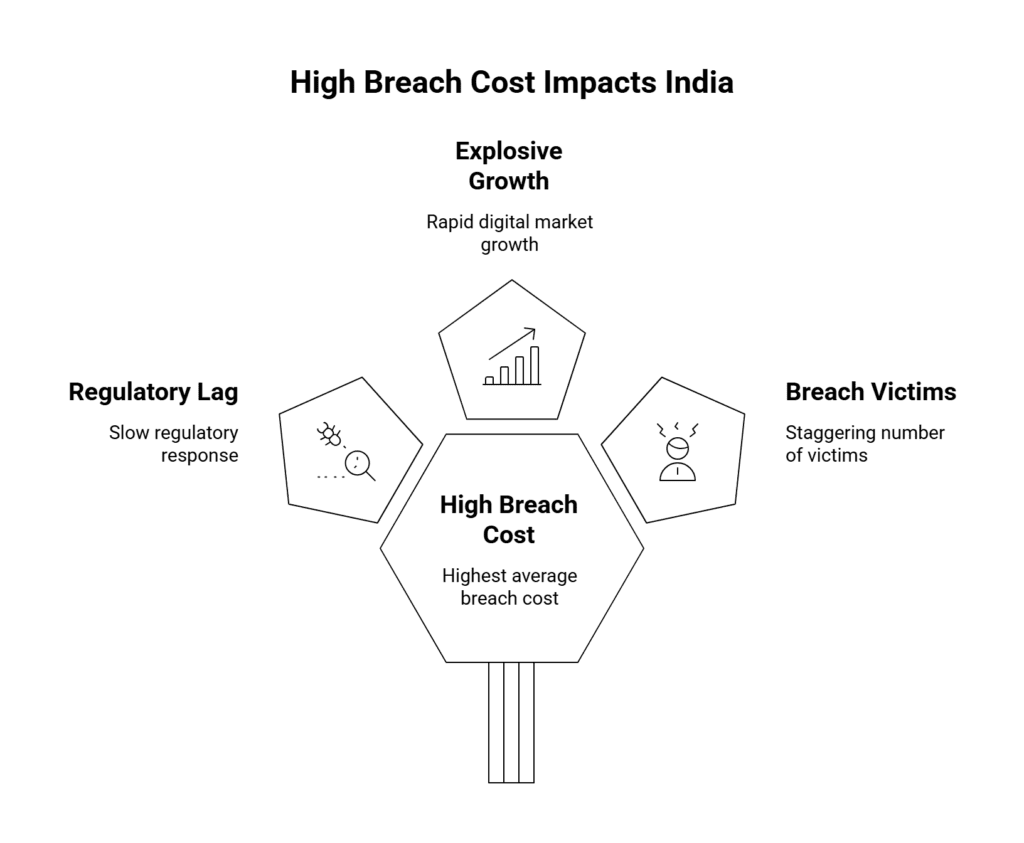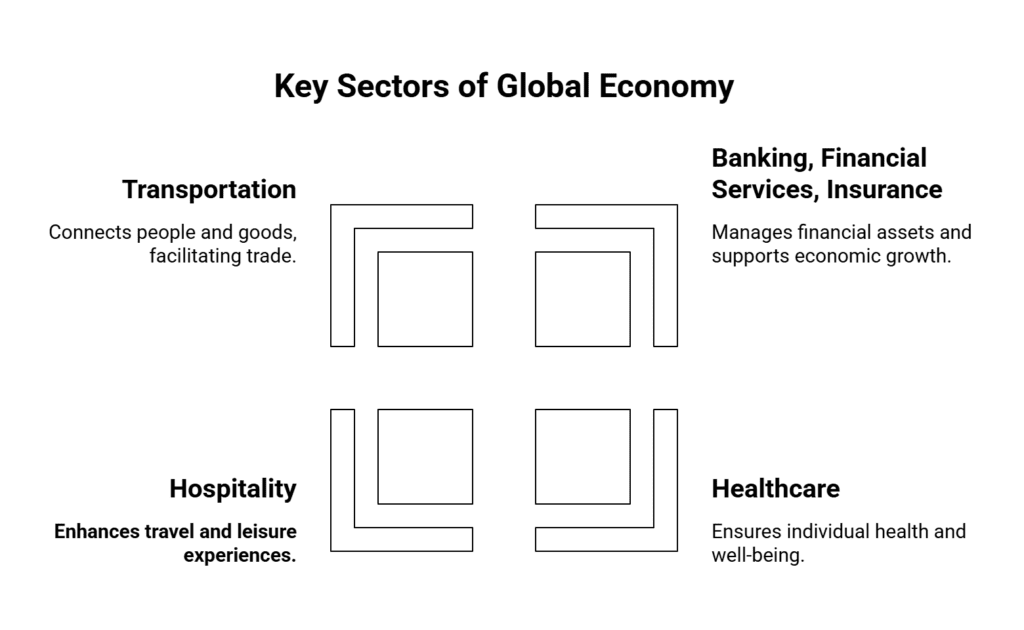India’s AI Governance Crisis: Data Breach Costs Surge to ₹220 Million, IBM Warns
Funny thing is, for a country priding itself as the world’s IT powerhouse, the cost of failing to secure its digital frontier has never been higher. According to IBM’s 2025 Cost of a Data Breach report, the average organizational damage from a breach in India just hit a record ₹220 million (or ₹22 crore), that’s a hefty 13% leap from last year, and the highest anywhere on earth.
AI adoption is racing forward across Indian industries. You see it everywhere, from hospitals leveraging predictive analytics to banks streamlining transactions, and government portals rolling out citizen-facing chatbots. But here’s the kicker: as the excitement around artificial intelligence sweeps boardrooms, a dangerous gap in risk management and governance is exposing businesses to unprecedented threats.
So, what does this mean? And why are Indian companies more vulnerable than ever?
The Numbers: Data Breach Costs Hit the Roof
Let’s slow down for a second and lay out the facts. The average financial fallout from a single data breach in India is, right now, the highest globally. Just one year ago, it was ₹195 million per breach. Now, it’s ₹220 million, a jaw-dropping increase that signals deeper systemic trouble.
Kind of alarming, isn’t it? But wait, there’s more.
- Research sector: Averaged ₹28.9 crore in breach costs, the highest among all industries.
- Transportation: Hit closely behind at ₹28.8 crore.
- Industrial: Not spared either, pegged at ₹26.4 crore per incident.
Phishing remains the top attack method, accounting for 18% of breaches. Other big culprits? Third-party vendor compromises (17%) and the exploitation of technical vulnerabilities (13%).
Why the Surge? AI Governance Lags Amid Widespread Adoption
Believe it or not, while AI tools are sprouting up in every Indian organization, proper oversight just isn’t keeping pace. In fact:
- Nearly 60% of breached organizations have either no AI governance policy or one that’s still a work-in-progress.
- Among those with a policy, only 34% actively deploy governance technology; the rest, at best, have paperwork but no teeth.
- Just 37% have meaningful access controls on their AI systems.
Shadow AI, think: unsanctioned, unmonitored AI tools used outside official IT oversight, has emerged as one of the top three cost drivers for breaches. Every time shadow AI’s involved, breach costs spike by an average of ₹17.9 million.
“India’s accelerating AI adoption brings immense opportunity, but it’s also exposing enterprises to new and complex cyber threats. The absence of access controls and AI governance tools are not just a technical oversight, it’s a strategic vulnerability,” said Viswanath Ramaswamy, Vice President – Technology, IBM India & South Asia.
Zooming Out: India’s AI Governance Framework, Where Does It Stand?
No Dedicated AI Law, Yet
As of 2025, India isn’t running with a standalone AI law. Instead, it relies on a constellation of policies, guidelines, and adapted existing laws to try and keep AI in check, sometimes successfully, sometimes not so much.
Key elements in play:
- The Digital Personal Data Protection Act, 2023: First major rulebook for handling digital personal data, it’s caused a stir but only applies to data stored digitally, meaning gaps still exist for other formats or fringe cases.
- The Information Technology Act, 2000 (and its many amendments): Still holding the fort on cybercrimes and digital harm. Covers a broad sweep of digital threats but wasn’t built for today’s fast-evolving AI landscape.
- MeitY’s AI Governance Guidelines (2025): These guidelines champion a “whole-of-government” approach, aiming to enforce compliance across sectors. But advisory bodies admit: challenges abound, and the framework’s still a moving target.
Sector-specific heavyweights like SEBI (finance), RBI (banking), and BIS (standards) have chipped in with their own AI-focused recommendations, but these remain scattered and sometimes out of sync. The consensus? India needs unified, clear-cut rules, fast.
IndiaAI Mission and the Push for Democratized Technology
Launched in March 2024, the IndiaAI Mission is all about building a robust ecosystem to foster innovation, boost data quality, and attract world-class talent. The whole idea: democratize access to AI, promote ethical development, and support growth across healthcare, agriculture, education, and smart cities.
Sounds nice, but reality is messier. While the mission offers hope for responsible AI, the actual regulatory machinery is lagging. And that’s where the breach costs find fertile ground.
The Anatomy of India’s Biggest Data Breaches
Let’s get specific: here are a few landmark incidents that have set alarm bells ringing, each highlighting a pressing need for better governance.
AIIMS Ransomware Attack (2023)
Hackers brought the All India Institute of Medical Sciences to its knees. Patient records, about 40 million, including full medical histories, are gone, disrupted for weeks. The aftermath exposed just how ill-prepared India’s healthcare sector remains against cyber criminals.
Indian Railways Data Breach
Millions of passengers had their travel info, contact details, and more dumped online following an attack targeting government infrastructure. The incident underscores the vulnerability of critical infrastructure, where old systems and patchy security make for easy targets.
EdTech Sector Breaches
Student records from popular education platforms, think emails, payments, academic scores, were exposed, prompting a reevaluation of how well India’s booming online learning market can protect its users.
And, of course, the infamous Aadhaar data leak, which saw biometric data compromised and spurred new urgency around unique identities and privacy.
What’s Driving India’s Data Breach Epidemic?
Here’s an at-a-glance breakdown:
- Shadow AI: Employees using unvetted AI applications, often without IT’s knowledge, drive breach costs skyward.
- Weak AI Governance: Patchy, outdated, or non-existent policies leave organizations exposed.
- Rapid AI Adoption: From banks to hospitals, everyone wants in, but few have baked in security.
- Third-Party Risks: Vendor systems and supply chains often become Achilles’ heels.
- Phishing & Exploits: Old standbys that still catch thousands every year.
How Does India Compare with the Rest of the World?

Globally, AI’s rapid integration into business models and digital services is a double-edged sword. But here’s what makes India stand out, unfortunately, not in a good way:
- Highest average breach cost internationally.
- Lagging regulatory response compared to top economies in the West and Asia.
- Explosive digital growth, India’s AI market primed to hit $7.8 billion by 2025, with a 20.2% growth rate.
- Staggering number of breach victims: Aadhaar hack alone affected 1.1 billion Indians.
What’s Being Done? Current Reforms and Policy Evolution
- The Digital Personal Data Protection Act (DPDP) came into force on August 11, 2023, a landmark move toward stricter protection and clear data handling guidelines. Fine print: Only digital personal data is protected, so more reforms are needed.
- MeitY’s 2025 governance guidelines push for transparency, fairness, and voluntary industry commitments like content provenance and “model cards”, tools to document how AI models work, their biases, and their intended use cases.
- Calls for a unified policy framework are getting louder. Why? Fragmented regulations just don’t cut it when threats transcend sectors.
Challenges on the Road Ahead
So, what’s holding India back? Several knotty problems:
- AI bias and algorithmic accountability: Not enough rules to require fairness or check discriminatory training data.
- Transparency and explainability: Most systems still act as “black boxes”, even to their creators.
- Enforcement gaps: Sectoral agencies run their shows; unified oversight is sorely lacking.
- Maturity lag: Many AI governance policies are either absent or stuck in development limbo.
Governance advocates call for sandboxes, safe testing spaces for low-risk AI use, and voluntary compliance from industry giants. But critics wonder if voluntary codes will ever be enough.
The Sectoral Breakdown: Where Are Breaches Striking Hardest?

Quick list of India’s most exposed sectors:
- Banking, Financial Services, Insurance (BFSI)
- Healthcare
- Hospitality
- Transportation
These verticals handle high-value personal and financial data, making them natural targets for cyber extortion and theft.
Moving Toward a Responsible AI Future
Here’s the hope: Policy-makers are listening, slowly. MeitY convened multi-stakeholder advisory groups in 2025 to design an “AI for India” regulatory framework, aiming for trustworthiness, accountability, and inclusivity.
Official reports urge a coordinated, whole-of-government approach. But until this gets teeth, Indian organizations will need to take the lead:
- Embed security controls in AI systems.
- Monitor for shadow AI.
- Invest in education, upskilling, and building a culture of cyber readiness.
While India wants to carve its unique path, one tailored to its social and economic realities, it still needs to align with global best practices, especially when overseas tech partners or customer data are involved.
Conclusion: A Technology Revolution with a Regulatory Catch
India stands at a crossroads. The promise of artificial intelligence is real. So is the peril, made tangible by record-breaking breach costs and high-profile attacks. Unless governance mechanisms catch up with innovation, risk will always outweigh reward.
That’s the truth, upfront. AI isn’t just a tool for progress in India. It’s a challenge the country must face head-on, before the cost, quite literally, becomes unbearable.
Key Takeaways
- India’s breach costs are the highest in the world, ₹220 million per incident in 2025.
- Rapid AI adoption has not been matched by robust governance or security.
- Shadow AI and phishing are top drivers of cyber losses.
- Policy reforms, including the DPDP Act and MeitY guidelines, are steps forward, but patchy enforcement hampers progress.
- Unified laws and sectoral coordination are urgently needed to secure India’s digital future.
- The clock’s ticking; businesses, regulators, and technologists must band together, or the next breach will cost even more.
And so, the story goes. AIs are on the rise. But, for now, so are the risks.






















